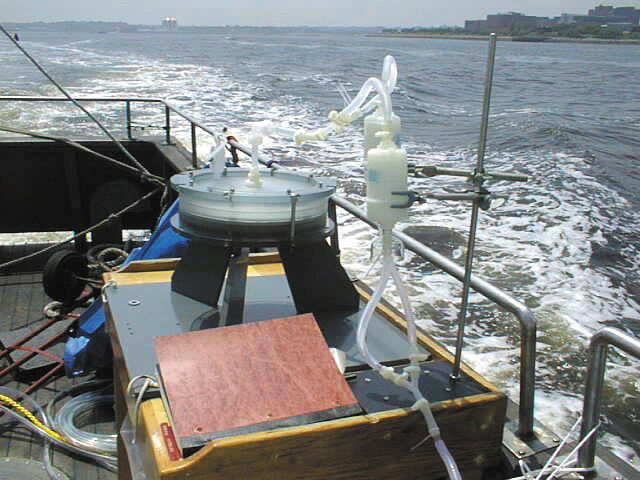As part of Earth Week festivities, scientists from UMass Boston and elsewhere got together to discuss the ‘State of the Harbor’ and explore various initiatives that could help create a cleaner bay. Of all the initiatives launched thus far by the Massachusetts Executive Office of Environmental Affairs – in association with the Environmental, Coastal and Oceanic Sciences (ECOS) department and the Urban Harbors Institute (UHI) – perhaps the one that holds out the greatest promise is the Massachusetts Watershed Initiative. The MWI, which is a broad coalition of government agencies, NGOs, corporate bodies and individuals, aims to protect natural resources and biodiversity on a watershed basis.
This is important, as the harbor is a natural basin to the 300 square mile or so watershed area surrounding it. A watershed is basically an elevated landform from where all surface and ground water flows to a common point. This means an awful lot of water flows into the harbor. Unfortunately, it also means an awful lot of sewage.
Therefore it comes as no surprise that the MWI is placing a lot of emphasis on improving water quality. “The basin wide water quality strategy project will adopt a multi-layered approach,” says Karl Pastore, Boston Harbor watershed team leader. “While we will reach out to communities in the watershed area to discuss known and perceived water quality problems, we will also collect existing water quality data and integrate it into a centralized database that will help experts find long-term trends and make appropriate plans in the short term.”
An interesting development is the planned creation of a geographic information system (GIS) application to enable visual communication of data relating to water quality. On a local level, the MWI has expanded its volunteer water quality monitoring programs and taken steps to find the causes behind dry day pollution and the resulting beach closings. Under a Coastal Zone Management program, the harbor now features several pump stations where boat owners can pump out their sewage instead of, let’s face it, dumping it in the harbor.
If all this sounds like an excessive obsession with the harbor, think again. As of the late 80s the harbor was receiving 500 million gallons of sewage each day, apart from 70 tons of sludge and 10 billion gallons of untreated drain water annually. In fact at one point there was more sewage flowing into the harbor than fresh water. At a staggering
$4.5 billion, the harbor has already become the world’s most expensive cleanup operation, ahead of Sydney.
Most of the initiatives being undertaken today will start showing results many years (even decades) from now. But things are slowly changing, albeit on a microscopic scale. According to Prof Robert Chen of the ECOS department, “the reduced organic matter flow into the harbor has had a remarkable effect on the ocean bed. An amphipod (a shrimp-like organism) has changed the complexion of the seabed from an aneoxic (without oxygen) state to an oxic (with oxygen) one.” Presently, the creatures have spread to about 70 per cent of the area, which is very good for the health of the harbor.
Another pointer to positive change involves ‘green power’. UHI associate director Jack Wiggin says the UHI has a special grant to conduct a feasibility study on renewable energy in the harbor islands. The study will assess the viability of power generation through wind, photovoltaic cells and a wave/tidal system. The resulting environmental impacts will also be noted. “It’s quite possible that sometime in the future we could have a choice of buying green power for our homes,” Wiggin adds.
Given the various initiatives being launched, a dirty Boston Harbor may soon be a distant memory.





















































